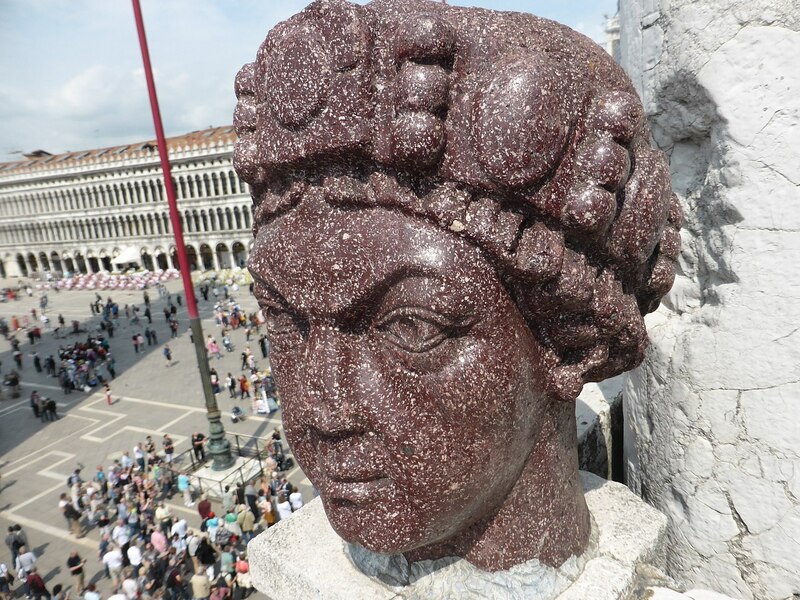Porphyry head
Type:
Sculptures
Date:
Sixth century
Medium:
Porphyry
Description:
A large porphyry head that probably represented the emperor Justinian (r. 527–65) is displayed on the upper facade of the cathedral of San Marco in Venice. It is known as "Carmagnola," the name of a man who was beheaded in the cathedral plaza in the fifteenth century, but the figure's heavy jeweled diadem places the head in the fifth or sixth century. It resembles the mosaic image of Justinian at the Church of San Vitale in Ravenna and was doubtless brought to Venice from Constantinople.
Porphyry is a very hard reddish-purple stone that contains feldspar crystals in the form of white spots. It was quarried only at Mons Porphyritis (Porphyry Mountain) in Egypt's Eastern Desert, between the Nile River and the Red Sea. Its extraction and dispersal was a monopoly controlled by the Roman emperors, and vast quantities of porphyry were shipped to Rome and around the Mediterranean between the first and fourth centuries CE. The quarries were closed by the fifth century, and all later porphyry sculpture and architectural components—columns, revetment slabs, sculpture—had to be acquired from older pieces, either culled from warehoused stockpiles or stripped from their original context as spolia. Because of its rarity, durability, and imperial associations, porphyry and its purplish color was highly prized throughout the Middle Ages.
Porphyry is a very hard reddish-purple stone that contains feldspar crystals in the form of white spots. It was quarried only at Mons Porphyritis (Porphyry Mountain) in Egypt's Eastern Desert, between the Nile River and the Red Sea. Its extraction and dispersal was a monopoly controlled by the Roman emperors, and vast quantities of porphyry were shipped to Rome and around the Mediterranean between the first and fourth centuries CE. The quarries were closed by the fifth century, and all later porphyry sculpture and architectural components—columns, revetment slabs, sculpture—had to be acquired from older pieces, either culled from warehoused stockpiles or stripped from their original context as spolia. Because of its rarity, durability, and imperial associations, porphyry and its purplish color was highly prized throughout the Middle Ages.
Relevant Textbook Chapter(s):
3
Image Credits:
Wikimedia Commons

